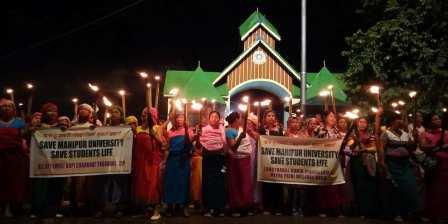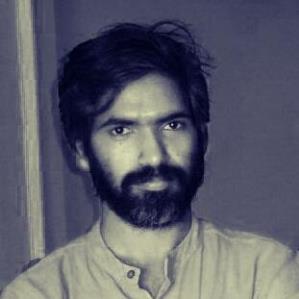Kuffir
It was clear they wished to play down the enormity of the bloodbath from the beginning.
First, they said two were killed. Then the figure became three, and five. And then six. Now they say: seven. Have you seen any pictures of any of the seven? Or were their names mentioned anywhere in the English news stories? Brahminized ‘national’ media which breaks news about suspects even before bombs have gone off, has been uniformly imprecise and reticent on who exactly were killed in Paramakudi on September 11th. Two days ago, now.
What is the media trying to do? It is not trying to whitewash the Paramakudi massacre. It is trying to tell you that it was necessary. What the police faced were a violent ‘mob’, and ‘miscreants’. They were unreasonable ‘protestors’ who wouldn’t ‘negotiate’. They were anarchic ‘agitators’ whose cause was so vague that it wasn’t worth mentioning.
The media is trying to tell you: how can anyone point fingers at a regime and its policing arm for trying to defend themselves against such faceless, nameless, irrational agitators?
A full day after the killings, read the Hindustan Times, or NDTV, or The Times of India, or DNA, or Zee News. Do the ‘agitators’ remain any less nameless, faceless and inexcusable? Do you see or read about any of those who had been killed, or injured or detained? Do you hear the other side at all? Do you see the victims?
The media has still not found any facts or evidence to extenuate the ‘crimes’ of the agitators. It seems to be as certain about their culpability as on the day the killings happened. When the killings were happening. Even before the killings happened, as evident from the coverage of the news relating to the event in the days leading up to it. The coverage talked ominously of ‘tension’ in the ‘caste-sensitive’ region, consistently.
Expect ‘tension’ when the Dalits seek to gather and remember a martyr. And whenever or wherever they seek to assert themselves and claim their rights? Dalit assertion is abnormal and disruptive, but caste oppression is normalized as ‘caste-sensitivity’. Over the years, mainstream discourse around Immanuel Sekaran’s memorial has tried to insinuate that it is ‘tension-ridden’. This has helped feed anxieties over ‘security’, and thereby paved the way for a militaristic response, every year, to this annual assertion of democratic rights, or more accurately, this annual assertion of the right to claim democratic rights.
How much ‘tension’ was created at Raj Ghat or how many shots were fired at Ram Lila maidan recently when bigots of various hues, shapes and sizes gathered there? The police were not even allowed to carry lathis, we’re told. Expect peace whenever and wherever the savarnas and their upper shudra acolytes gather. Even if it is to express open and unbridled contempt for India’s parliament and constitution. From the redoubtable Parivar to outfits like ‘Krantikari Manuwadi Samaj Dal’: the media and the self-anointed alternative media found none of them disruptive or sources of ‘tension’.
Much ground was prepared before these killings. Lakhs have gathered every year in Paramakudi, on that particular day, to observe Thyagi Immanuel Sekaran’s death anniversary. Over a million were expected this year. Over a million people from the most marginalized section of the country. People who found in Immanuel Sekaran’s example enough inspiration and courage to stand upto the everyday denial of rights through the rest of the year. Paramakudi could only have been a source of peace for them, the ‘tension’ was all of the oppressors’ making.
The tension was their way of restraining, isolating and severely impairing the movement towards assertion. It was the administration, it’s obvious, which created tension through its efforts to make the event as tough as possible for the participants: through its efforts to find excuses for draconian restrictions on the proposed gathering by blaming a Dalit boy for alleged attempts to vitiate the atmosphere and detaining leaders who wished to participate in the event by imputing ‘political’ motives to them. Note how a writ petition had to be filed before the Madras High Court seeking basic facilities at the event, just a few days before the memorial day. The petitioner said: ‘This happens every year due to lack of pre-planning and draconian refusal to accord permission to open food stalls and other public service centres by the respondents (Ramanathapuram Collector and Superintendent of Police)’.
‘This happens every year‘. Yes, the ground had been prepared for long.
This is quite clear from the Chief Minister’s almost off-hand initial response defending her killer policemen.
This is also quite clear from the way the media primed itself to ‘cover’ the event. Check the photographs: do you notice any picture in which you could say the photographer tried to take an objective view of the terrible events unfolding before him? Is there any picture among the lot which seems to lean towards those who actually faced the bullets, empathizes with them? On the other hand, it’s quite clear from most of the pictures whose side he was on. Literally, sometimes. Check also the interesting captions, implicitly endorsing the police actions against the ‘mob’, the ‘miscreants’ etc.
They’ve been quite clear in their methods and intentions. We have to be clear on what’s justice. Justice isn’t going to be served by picking on the footsoldiers, the hands that pulled the trigger. It demands the heads behind them.

“Policemen use tear gas shells on agitators in Paramakudi on Sunday. Photo: PTI” The Hindu, Sept/12/11

“Policemen take away an injured person from the scene of violence in Paramakudi on Sunday. Police held negotiations with the agitators, asking them to give up the road roko protest. Even as the negotiations were on, some miscreants threw stones and footwear, following which the police resorted to lathicharge and bursting teargas shells. Photo: L. Balachandar” The Hindu, Sept/12/11

“According to Tamil Nadu Chief Minister Jayalalithaa, the agitators continued indulging in violence even after lathicharge. The police had to resort to firing “in self-defence and to protect public property”, she added. Photo: L. Balachandar” The Hindu, Sept/12/11

“Police chase protestors in Paramakudi on Sunday. Photo: L. Balachandar” The Hindu, Sept/12/11

“A policeman tries to save himself from a protestor’s ire. Chief Minister Jayalalithaa has pointed out that a number of police personnel including a Deputy Inspector General of Police were injured as a result of violence by the TMMK cadres. Photo: L. Balachandar” The Hindu, Sept/12/11

“Police lathicharge protestors in Paramakudi on Sunday. Photo: L. Balachandar” The Hindu, Sept/12/11

“An injured protestor is being taken away from the scene of violence in Paramakudi on Sunday. Photo: L. Balachandar” The Hindu, Sept/12/11

“The death toll in the police firing has risen to seven. Photo: L. Balachandar” The Hindu, Sept/12/11
~~~
Images: Courtesy: The Hindu, Sept/12/11









